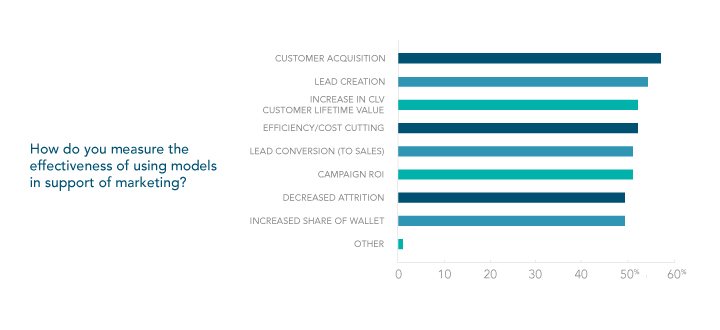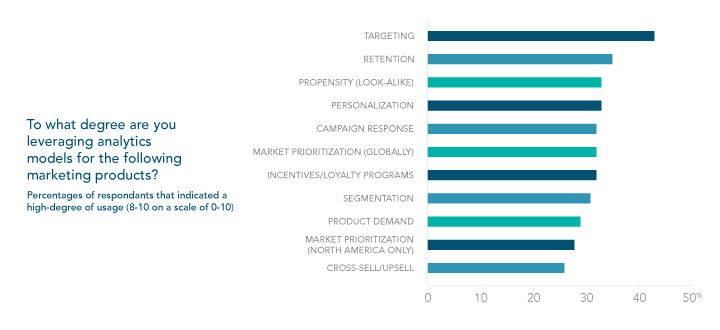It’s no secret that data has been a cornerstone of B2B marketing for years. By enabling marketers to learn more about their customers and prospects, data has played a vital role in shaping strategies and guiding investments. But maximizing the ROI of marketing goes beyond the data in hand. The real value lies in extracting the truth and meaning rooted in the information.
Enter analytics.
Analytics is the primary enabler to derive truth and meaning from data that propels business growth. After all, a marketing campaign that relies on data is good, but a marketing campaign driven by analytic insight is great.
The move to data-driven insights is being forced by continued business reliance on technology and automation throughout the enterprise. Growth in digital technologies is driving the ability to analyze more data. This, in turn, is fueling the enterprise’s appetite for better data, more advanced analytics skills, and the implementation of best practices.
Every department benefits from analytics in one way or another, though some are slower to fully integrate analytics into their daily routine. Others tend to operate in silos, making the sharing of insights difficult. Fortunately, many organizations are trying to break down those data and analytic silos.
So how are marketers leveraging analytics?
Last March, Dun & Bradstreet partnered with Forbes Insights to explore the current state of analytics adoption across the enterprise. The study surveyed a diverse cross-section of business professionals about their analytics deployment and strategy. Here are some of the key highlights as it pertains to marketing.
Not surprisingly, more than half (56 percent) of B2B marketers believe analytics is critical to marketing success. But are marketers actually using analytics to drive new opportunities?
According to the report, the number-one use case for marketing teams is driving new customer acquisition, with 58 percent saying they are using analytics to find new customers while 55 percent use analytics to grow the number of leads they generate.

Another major use case for analytics in marketing is improving operational efficiency. The portion of those who said they look to data and insights to drive efficiency and help cut costs in their departments was 53 percent, while 52 percent of those surveyed are looking to analytics to help improve the conversion of the leads they capture.
When it comes to engaging customers, analytics is typically used for basic targeting and retention initiatives.

However, there is not as big a push to use advanced analytic models to help drive new opportunities like using predicative and anticipatory analytics to gauge product demand and identify cross-sell/upsell opportunities.
Even with so many marketers planning to use some form of analytics to help meet their most critical objectives, only half of them said they have a clear understanding of how to use analytics. Based on the findings, it seems as if most marketing organizations are slow to adopt a truly analytically-driven approach towards marketing.
Furthermore, despite the emphasis on the value of data and analytics, many marketing teams are concerned with the quality of the data they use. Only 42 percent of those surveyed in a marketing function had confidence in the quality of their data. Clearly, this needs to be addressed, as insights are only as good as the data in hand. In time, marketers will need to become more sophisticated in their use of analytics to have a real competitive advantage.
Download the full report to see the full results of the study and learn how your organization stacks up against others as analytics accelerates into the mainstream.

